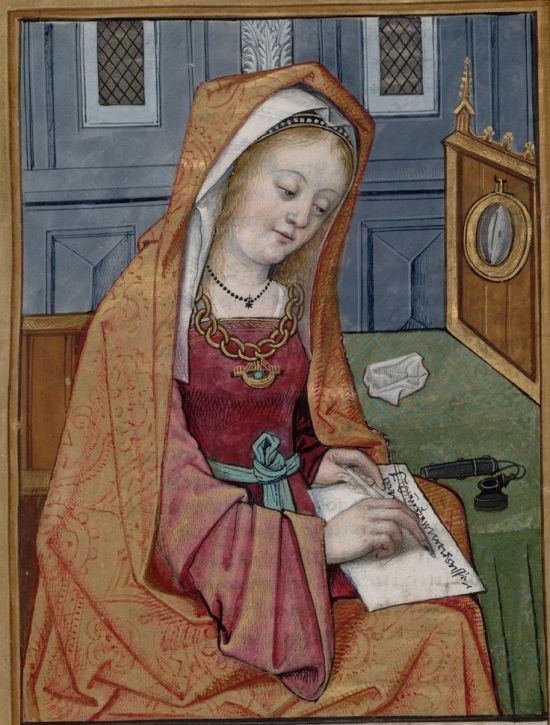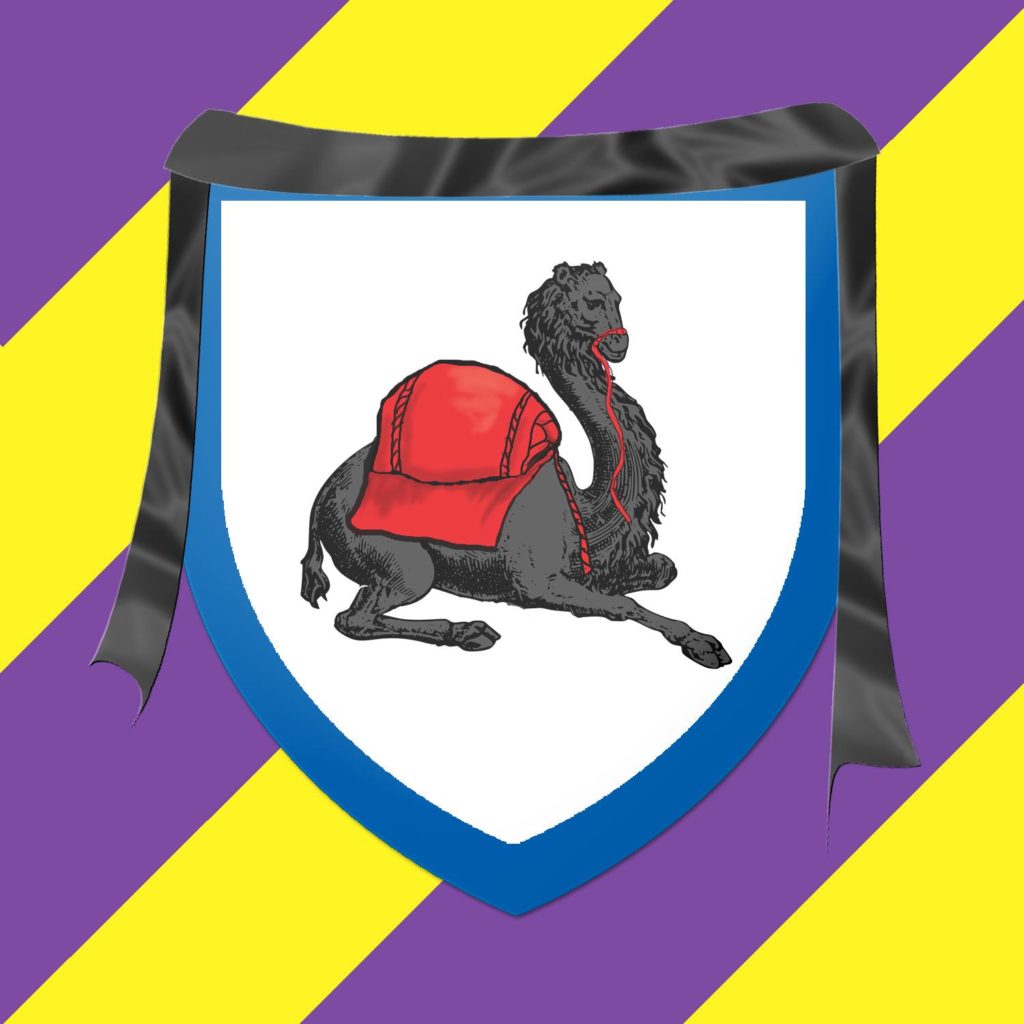Greetings from Lady Allison of Forgotten Sea! I am currently beginning work on the Newcomer’s Section of the Kingdom of Calontir website, in an effort to help new members become more comfortable quickly and to perhaps bring in other new members as well.
I have put together a short list for a Newcomer’s Dictionary, and unfortunately, I am having a rough time making it a bit more well-rounded for everything we do here in Calontir. I was wondering if the wonderful people of Calontir would be so kind as to help me by perhaps giving suggestions on what to add, where to make changes, better definitions, etc. Please, feel free to reply privately at Webminister@calontir.org. Any help would be completely appreciated. Thank you!
AoA – Award of Arms; Generally the first award that people receive in the SCA. Indicates participation and involvement in one or more activities within Calontir. A recipient of an AoA may place the title Lady or Lord in front of their name and may present their device. AoA level awards include: Simple AoA, Torse, Swan, Leather Mallet, Iren-Fyrd, Boga-Fyrd.
Apprentice – Unofficial role within the SCA; Signifies that a Laurel has become a mentor to a lower-level award holder.
Award Recommendation – An online form, or paper recommendation, which is given to the current Royalty to recommend a member of the populous for an award.
Baron/Baroness – Appointed by the Crown (Royalty) for a specific term to lead a smaller area of Calontir, known as a barony.
Barony – Largest of the groups within Calontir, usually in an area with a greater populous of active Calontir members. Calontir Baronies include: Lonely Tower (location), Forgotten Sea (Kansas City), Three Rivers (St. Louis, MO), Vatavia (Wichita, KS), etc
Calontir – Kingdom within the Society of Creative Anachronism; Includes parts of Kansas, Missouri, Arkansas, Iowa, and Nebraska.
Canton – A smaller group located under the leadership of a barony. Example: Canton of Gryphon’s Mark is under the Barony of Three Rivers
Chatelaine – Person within a group who is in charge of welcoming and helping newcomers.
Chronicler – Person in charge of newsletters for a group within Calontir.
College – A smaller group within Calontir, usually constantly changing due to being associated with a university.
Deputy – A back-up or second-in-command for a current officer.
Earl Marshal – Kingdom officer in charge of all fighting rules, regulations, and policing.
Equestrian – All horse activities are categorized under this title.
Excellency – A term/title used to refer to a person who has been a King or Queen one time, a person who has been a baron or baroness, or has been given a court baronage by a King or Queen.
Exchequer – Treasurer
Fyrdman – A member of the populous who has received an AoA level award for fighting or archery or equestrian.
GoA – Grant of Arms; a second level award, usually given to those members who have shown dedication and prowess in an activity. GoA award recipients may place Honorable Lady or Honorable Lord in front of their name. GoA awards include: Simple GoA (rare), Cross, Lily, Silver Hammer, Iren-Hirth “Huscarl”, Boga-Hirth “Archer Huscarl” and Eo Hirth: “Equestrian Huscarl”.
Gold Falcon – Officer in charge of heraldry within the Kingdom.
Guild – Groups within the Kingdom with like-minded interests.
Gulf Wars – A large war held in the Kingdom of Gleann Abhann that Calontir likes to participate in going to. Many events: Archery, Heavy Fighting, Steel Fighting, Arts and Sciences, and many more!
Huscarl – A member of the Iren-Hirth or Boga-Hirth or Eo Hirth. These members have received either of those GoA level awards.
Knight – A member of the Order of Chivalry – a peerage level order for fighting, may take squires.
Ladies of the Rose – An order for any person who has served at least one term as a Queen of Calontir.
Laurel – A peerage level order member for Arts and Sciences, may take apprentices.
Lilies War – A war held in Calontir every year in June.
Lily – A GoA level order award for prowess in the Arts.
Man at Arms – An authorized fighter who has not yet received an AoA fighting award.
Marshal – A member of the populous who is warranted in acting as a “referee” or “guide” for fighting, equestrian, or archery.
Master of Arms – Similar to a Knight, a member of the Order of Chivalry – a peerage level order for fighting, may take squires.
Membership – Being a paid member of the SCA.
Minister of Arts & Sciences – Kingdom officer in charge of all arts and sciences within Calontir.
Minister of Youth – Officer in charge of youth activities and policies within Calontir.
OP – Order of Precedence; a listing of all awards, royalty, and stations within Calontir. May be used to rank members.
Orders – Award groups within the Kingdom.
Pelican – Peerage level award for service, may take protégés.
Pennsic – A very large war held in the Kingdom of the Middle that Calontir likes to participate in going to. Many events: Archery, Heavy Fighting, Steel Fighting, Arts and Sciences, and many more!
Populous – Members of the Kingdom of Calontir.
PoA – Patent of Arms; highest level awards – peerage level means that the member has achieved an extremely high level of achievement in a particular area, usually classified as mastery. Awarded for Arts and Sciences (Laurel), Fighting (Knight), or Service (Pelican).
Protégé – Unofficial role within the SCA; Signifies that a Pelican has become a mentor to a lower-level award holder, usually in service.
Royal Highness – Accepted title for the Prince or Princess of Calontir
Royal Majesty – Accepted title for the King or Queen of Calontir.
SCA – Society of Creative Anachronism
Scroll – Most commonly given with awards and read aloud in court. A scroll is a piece of parchment (or other material) with an explanation of the award and why the recipient is receiving it. It may also include any royal whims for “territories, land, etc” which the Crown may decide to bestow upon the recipient.
Seneschal – Group “President”. The legal representative for a branch. Generally in charge of the functioning of the group, overseeing events, signing contracts, interacting with the media, and organizing meetings.
Shire – A smaller group within Calontir, not within the area of a larger barony.
Squire – Unofficial role within the SCA; Signifies that a Knight or Master of Arms has become a mentor to a lower-level award holder.
The Mews – Kingdom of Calontir newsletter
Vigil – A period of time before a member is elevate to a peerage level award where friends, mentors, household members, or anyone else may visit the candidate and bring gifts, sage advice, unique insights, or shared pasts.
War Council – Members of the Kingdom, selected by the King or Queen to act as council for warfare.
Warrant – A warrant of appointment for an office within the Kingdom, Barony, Canton, Shire, etc. Must be signed by the officer the new officer reports to, and in some case the Crown. It is an agreement that the person stepping up into the position will do his/her best and fulfill the duties of the office that have been set forth.
Webminister – Officer in charge of all things web/internet for a group.
Lady Allison of Forgotten Sea
Kingdom of Calontir Webminister



You must be logged in to post a comment.